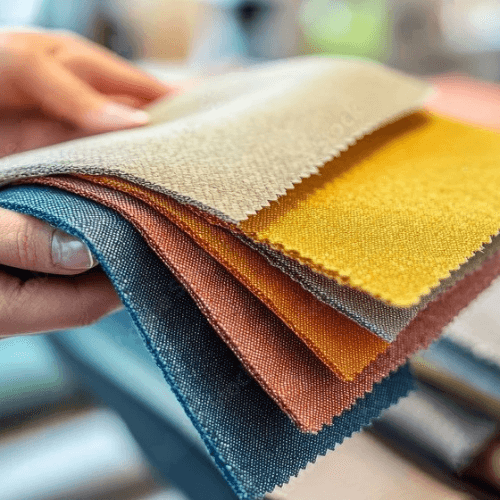The Importance of Sustainable Practices in the Textile Industry

The textile industry is at a pivotal crossroads, facing increasing scrutiny from consumers, regulators, and environmental advocates regarding its impact on the planet. Traditional textile production methods often involve high water consumption, significant energy use, and considerable waste generation. As a result, adopting sustainable practices has become not just a trend but a necessity for the industry’s future. This blog explores the importance of sustainability in the textile industry and highlights key practices that can lead to a more responsible and eco-friendly sector.
### 1. **Environmental Impact Reduction**
One of the primary reasons for adopting sustainable practices in the textile industry is to mitigate its environmental impact:
– **Water Conservation:** The textile sector is responsible for approximately 20% of global clean water pollution due to dyeing and finishing processes. By implementing water-efficient technologies and closed-loop systems, manufacturers can drastically reduce water usage and wastewater generation.
– **Lower Carbon Footprint:** The industry accounts for about 10% of global carbon emissions. Transitioning to renewable energy sources, such as solar or wind power, and optimizing production processes can significantly decrease greenhouse gas emissions.
– **Chemical Management:** Sustainable practices involve reducing or eliminating harmful chemicals used in dyeing and finishing processes. Utilizing non-toxic dyes and eco-friendly treatments minimizes pollution and protects workers’ health.
### 2. **Resource Efficiency**
Sustainability promotes efficient use of resources throughout the textile supply chain:
– **Sustainable Materials:** The shift from conventional materials to sustainable alternatives—such as organic cotton, hemp, and recycled polyester—reduces dependency on resource-intensive textiles. These materials often require fewer chemicals and less water during production.
– **Circular Economy Principles:** Embracing circular economy practices involves designing products for longevity, repairability, and recyclability. This approach minimizes waste by keeping textiles in use for as long as possible through reuse, recycling, or upcycling initiatives.
### 3. **Ethical Labor Practices**
Sustainability extends beyond environmental considerations; it also encompasses social responsibility:
– **Fair Trade Practices:** Many consumers are now prioritizing brands that adhere to fair trade principles, ensuring that workers receive fair wages and work in safe conditions. By partnering with suppliers who prioritize ethical labor practices, companies can enhance their brand reputation while contributing positively to workers’ lives.
– **Transparency in Supply Chains:** Consumers increasingly demand transparency regarding the origins of their clothing. Implementing transparent supply chains helps brands build trust with customers by demonstrating a commitment to ethical sourcing and responsible manufacturing.
### 4. **Consumer Demand for Sustainability**
The shift towards sustainability is driven by changing consumer preferences:
– **Growing Awareness:** As awareness of environmental issues rises, consumers are actively seeking out brands that prioritize sustainability. Studies show that a significant percentage of consumers are willing to pay more for sustainable products, making it imperative for brands to adapt their practices accordingly.
– **Market Differentiation:** Companies that embrace sustainable practices can differentiate themselves in a crowded market. By promoting eco-friendly initiatives and transparent sourcing, brands can attract environmentally conscious consumers who value sustainability.
### 5. **Regulatory Compliance**
Governments worldwide are introducing stricter regulations aimed at reducing the environmental impact of industries:
– **Ecodesign Requirements:** Regulations such as those proposed by the European Union focus on making textiles more durable, repairable, reusable, and recyclable. Compliance with these regulations not only avoids penalties but also positions companies as leaders in sustainability.
– **Extended Producer Responsibility (EPR):** EPR schemes require manufacturers to take responsibility for their products throughout their lifecycle, including disposal and recycling. Implementing sustainable practices helps companies prepare for these regulatory changes while promoting responsible consumption.
### 6. **Economic Benefits**
While transitioning to sustainable practices may require initial investments, the long-term economic benefits are significant:
– **Cost Savings:** Sustainable manufacturing processes often lead to reduced resource consumption and waste generation, resulting in cost savings over time. For instance, energy-efficient machinery can lower utility bills while minimizing carbon emissions.
– **Access to New Markets:** As sustainability becomes a focal point for consumers and businesses alike, companies that prioritize eco-friendly practices can tap into new markets and partnerships focused on sustainability.
### Conclusion
The importance of sustainable practices in the textile industry cannot be overstated. By reducing environmental impact, promoting resource efficiency, ensuring ethical labor practices, responding to consumer demand for sustainability, complying with regulations, and realizing economic benefits, the industry can pave the way for a more responsible future.
As we move forward into an era where sustainability is not just an option but a necessity, embracing these practices will be crucial for textile companies looking to thrive in an increasingly competitive market. By prioritizing sustainability today, we can ensure a healthier planet for future generations while creating innovative products that resonate with conscious consumers worldwide.






